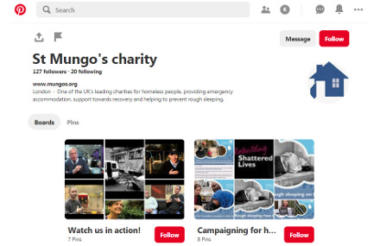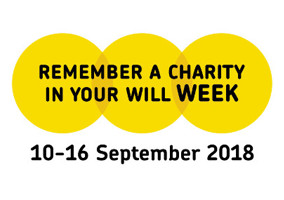Digital is already a key part of so many charities’ legacy strategies, but what channel has most impact and how we can reach people at key life moments when they are most likely to be writing a will?
These are the questions we asked at St Mungo’s when we ran our first digital legacy campaign in the spring of 2018. The campaign, What does home mean to you? was our first real foray into online marketing for legacy fundraising. Like many other charities, we had previously assumed that, as we were targeting an older demographic, our audience were not likely to be regular social media or internet users. Of course, this isn’t the case at all and the strong results that we saw from the campaign was further testament to this.
Rise of the silver surfer
The large majority (82 per cent) of 55-64 year olds in the UK are online, according to Ofcom’s recent report, along with 65 per cent of those aged 65-74, and these numbers are increasing year on year. Similarly, a recent eMarketer report revealed that, although Facebook is decreasing in popularity with teenagers and young adults, it looked forward to welcoming half a million new UK users aged 55 and over in 2018, making this age group now the second biggest demographic on the platform.
Recognising that digital can be used to communicate with our target audience is only the first step. It’s important to put ourselves into the shoes of prospective legators and consider their lifestyles and online habits, exploring how our messaging could best integrate into their existing behaviour.
While my expertise is on the digital side, I worked closely with Katie Wimpenny, the charity’s then legacy manager, who shared a wealth of valuable insight about our legators’ lifestyles and habits. We discussed the fact that many people consider creating or updating their will when going through a key milestone in their life such as moving or buying a home, getting married, having children or beginning retirement. These are the key trigger events, so we asked ourselves: how could we use digital to target our audience at those moments?
Reaching our audience at significant moments
Embracing the marketing mantra of ‘right person, right message, right time’, we knew it was important to ensure our content was in front of our audience as they were navigating through these important phases of their life.
Of course, there needed to be a creative fit there too. As a homelessness charity, our campaign centred on the idea of the home, asking people what home meant to them. The aim was to inspire the public to use their legacy to help those who weren’t so fortunate; those who didn’t have the same comforting memories of home.
As Katie and I were both in the process of buying our first homes ourselves, we shared tales of hours spent on Pinterest looking up interior design ideas. This led to the idea of running a Pinterest ad campaign, targeting users looking for home décor inspiration who were likely to be in the process of moving house.
But was Pinterest the right place for a legacy ad? It was a completely new channel for us and we were pleasantly surprised by the results, almost 14,000 users engaged with our messaging on this platform. Pinterest was our third best performing platform at driving people to the website, after direct traffic, and the much more established Facebook.
We looked to other ways we could apply this logic. For example, targeting free will ads at those either thinking about or just beginning retirement. Social media advertising is an effective and relatively cheap way of really drilling down on your targeting and ensuring you reach the right people.
Match the creative with the channel
However, that match with creative is essential. When running a later campaign, which focused on skills and employment training, we didn’t achieve the same success on Pinterest. The disconnect with the users’ interests, search criteria and our messaging meant that we hadn’t got it quite right this time. Our content didn’t make as much sense to our audience in their current digital space. Unsurprisingly perhaps, when we took the same campaign out on LinkedIn – a platform often linked to career development – it performed well.
To maximise the impact of a legacy campaign on digital, we learnt that it’s important not only to get to know your audience, but how your message might fit into the wider context of their life. Once you’ve identified which channels they’re likely to be using, you need to develop a creative theme that feels authentic and natural on this platform. With those points covered, legacy messaging can perform extremely well on social and other online channels.
Hayley Creasey is digital fundraising manager at St Mungo’s
|
More Remember A Charity Week articles










